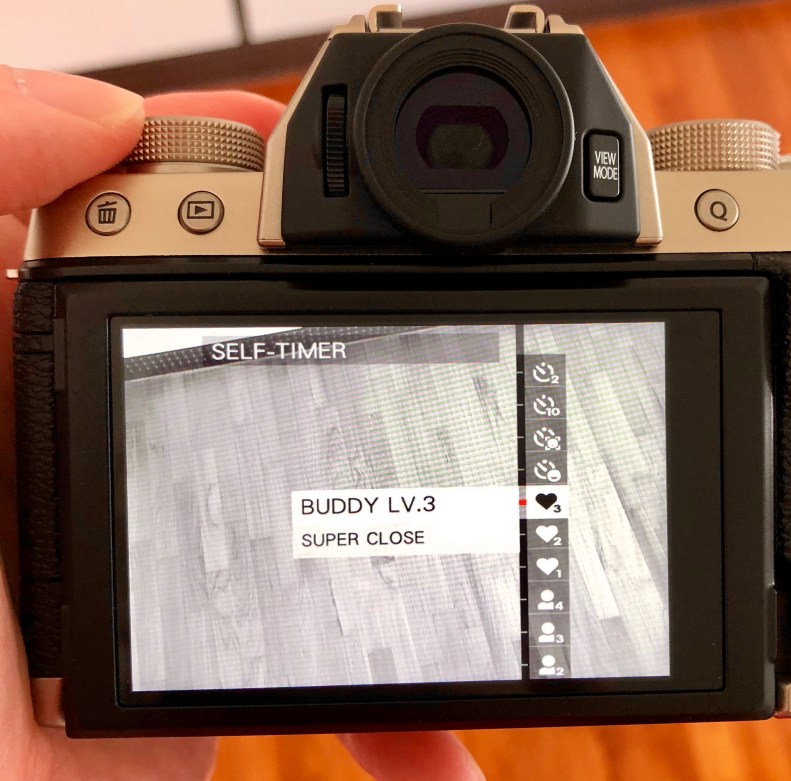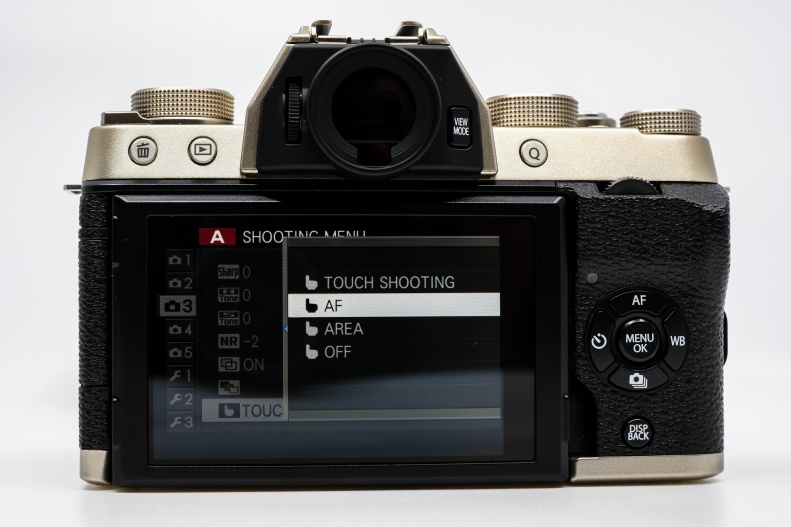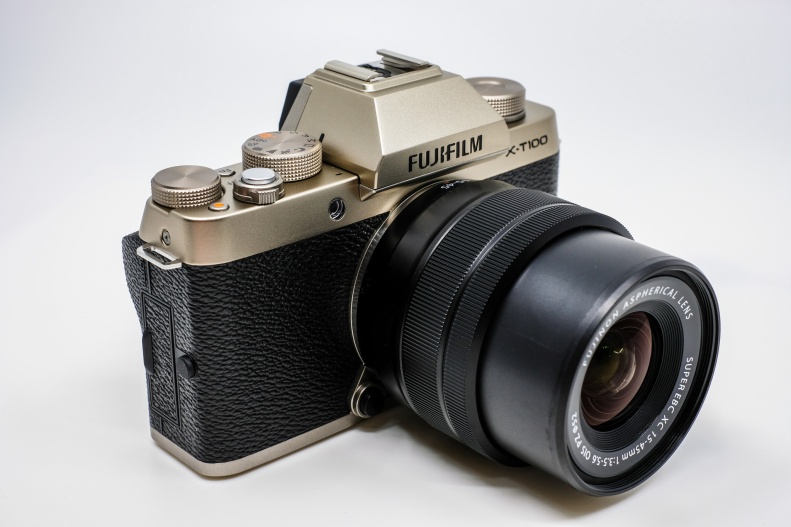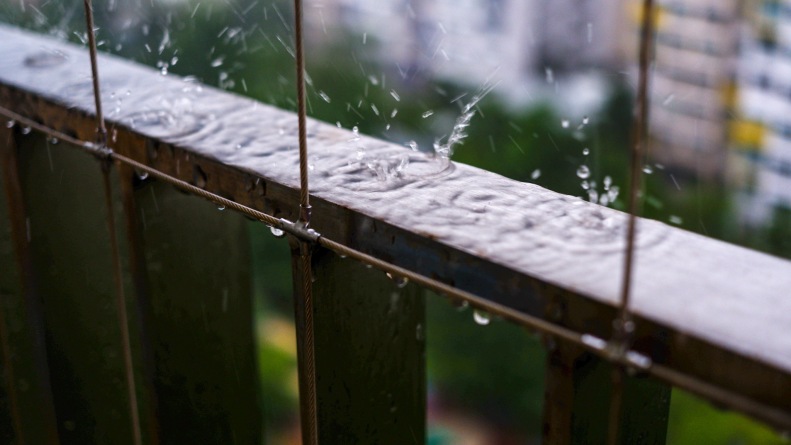Now, to be honest this was one camera review I actually did not plan on doing (with me trying to manage my main job, kids and life itself) but haha, yes, the X-T100 did end up in my hands due to the generosity of a very close friend and I am again humbled and very glad to share my thoughts about this latest release from Fujifilm.
And this was with no regrets, for the X-T100 does come with its own unique surprises – for example: even better than the ubiquitous ‘Smile Shutter‘, the X-T100 comes with its own ‘Buddy Mode‘ in SR+ where you get to define your level of ‘buddiness’ from Level 1 to 3 and so on. (Its super fun at how this can be super awkward) 😐 More later.
Itsy-bitsy background.
I guess the first reaction most will have is ‘wut, a X-T100?’
Where does this camera model sit in the Fujifilm family?
Let me (try to) help.
At the top tier of the Fujifilm DSLR-inspired design (centered EVF) X-mount range of cameras, we have the single digits, the X-H1 (my review of this evolutionary camera here) and X-T2. The single digit models sit above the double digits – the X-T20 and these are all cameras equipped with Fujifilm’s propriety X-Trans III sensors.
The newly released Fujifilm X-T100 sports a Bayer type sensor and it sits nicely below the X-T20 and above the Fujifilm’s Bayer sensor series, the X-A range of cameras.
In another way, we can say the X-T100 is the top-end camera in Fujifilm’s Bayer sensor range of cameras and the only one in this series equipped with an EVF and much more.
(of course, we also have the X-Pro and X-E range of X-mount cameras but these are the rangefinder design family of cameras and do not fall under the X-T line of cameras).

ok, i hope that was helpful…
X-T100, XF23mm F2.
The X-T100 and Specs.
ok, with that out of the way, let’s focus on the star here – introducing The X-T100.

The X-T100 comes in a gorgeous muted-Champagne gold variant other than the typical silver/black and full black variants. You need to see it in real person to take in the beauty of this shade.
(I am a bit excited as most of the time being the nerdy looking dude I mostly end up with the not so instagrammable colour variants among the other reviewers).
Even though packaged as a entry-level camera, the X-T100 comes in a beautiful anodised coating on aluminium top cover, and it feels well built and robust in one’s hands. A glance and one will easily notice the well-made details such as the knurled knobs that proudly garnishes the X-T100.

In fact, so much attention was paid to the details and user experience that one has the option of adding a screw-on type grip onto the body (included in box and not sold separately like the Sony stick-on ones).

Coming in only at a mad 399g (excluding batt and SD-card) or 448g (card and batt in), the X-T100 is diminutive at 121mm x 83mm x 47.4mm compared to its other siblings and I can see why this is a strength of the X-T100.

Yes, that’s a Lego figurine with arms wider than the camera thickness and height 3/4 of the X-T100’s. That’s how small I am referring to. (that’s the XF27mm F2.8 lens mounted too)
and yes, my iPhone X is longer than the X-T100. 😥

Spec-wise, even though not sold as a high-end model, the X-T100 does not disappoint with:
- A 24.2 megapixels APS-C sensor (Bayer arrangement)
- A good range of the Fujifilm Film simulations (Provia, Velvia, Astia, Classic Chrome, Pro-Neg H, Pro Neg Standard amongst many others)
- ISO performance from 200 – 12800 or 100 – 51200 (extended)
- Up to 1/32000s Shutter speeds with E-Shutter and 1/4000s with its Mechanical shutter.
- The latest generation AF algorithms from Fujifilm.
- Build in flash unit one can safely tuck away when not in use.
- A three-way tilting 3 inch LCD unit at 1,040k dots which supports touch-screen AF and shooting.
- An 2,360k dots OLED EVF at 0.62x magnification.
- Battery life of approx 430 frames with the XF35F1.4 lens
- 4k 3840×2160 15P recording, continuous up to 30 mins and above the standard modes, Slow-mo video at 1280×720 1.6x/2x/3.3x/4x.
- Not mentioned on the box, but yes – improved buffers for CH and CL modes (200% that of X-A5 whether in full JPEG or JPEG/RAW modes) and extended video recording times over the X-A series. The A.F speed is purported to be 1.5x faster than its nearest sibling, the X-A5.


The 3-way tilt LCD is immensely useful, giving flexibility in shooting angles and the built in flash unit at GN7 at ISO200/m comes in super useful when one just needs that extra help in low light.

The SR+ mode.
One thing I have always found weird was how Fujifilm’s auto mode (named SR+) is so little recognised. SR+ mode does not appear on the top tier models but it is always something I appreciate having as a backup.

And yes, the SR+ mode algorithms on the X-T100 has been beefed up significantly with at least 58 different presets (including landscape, beach, sunset, blue sky, portrait, moving subject and on…) for really any sort of situation one may come across. Its really a mode I would gladly fall back on, even given that I shoot the Aperture and Manual modes mostly.
And what most reviews won’t give you in depth is that the SR+ mode here is really powered up, with nifty functions like Group Shots mode, Smile Shutter mode and even…. (ok I don’t have any idea how this works) Buddy mode with varying degrees of closeness from 1 to 3.
(Level 3 probably refers to buddies who can turn up drunk each other’s houses late at night with no warning and still be expected to be nursed back to sobriety next morning even if one trashes up the buddy’s house.


Shooting and Handling.
A nice touch is the X-T100 shares the same menu system with its other X-T siblings, down to the use of the Q (quick menu) button and getting the muscle memory transferred over was easy. Layout wise I see little or not problems for users for X-A series planning t upgrade.
The menu system is easy to navigate, with one able to map one’s most used menu items to the Q button menu system also.




During shooting, the X-T100 doesn’t disappoint either with a well designed set of three top dials.
The left top dial maps to: Film Simulation/Flash engagement in PASM or the smile shutter/buddy modes in SR+ modes while the two right top dials set PASM/SR+/Portrait/Landscape (etc) modes and Exposure compensation.
A quick press of the D-pad also gives one a one-press access to White Balance, Drive, AF point selection and Timer options, keeping true to Fujifilm’s strengths in designing intuitive and straightforward to manage cameras.

Start up is relatively fast at 0.4-0.8s (High performance vs Standard modes) with the XC15-45mm kit lens (my review of this lens is here) bundled with the X-T100. (The X-T100 comes bundled with the XC15-45mm as its kit lens) and surprisingly, the eye-detection and face-detection works very well and is very responsive even in SR+ mode.
It is worth noting that the X-T100 is X-mount and this means one has access to every single X-mount lens Fujifilm and third party makes has produced from the wider ends of 9mm (Laowa 9mm) to 400mm (Fujifilm XF100-400mm). (numbers here are before x1.5 for APSC crop)

(Yes, you can use all of Fujifilm’s X-mount on the X-T100 & its fun)
Before we get to the sample photos, please allow me to share my standard disclaimer.
1. The X-T100 was loaned from Fujifilm for 2 weeks and was returned at the end of the review period. I did not receive any payment in any form for this review.
2. This X-T100 in the review is a pre-production model and hence the final production model will only perform better.
3. All images are JPEG SOOC and only edited by cropping and adjustments in exposure. There is no raw support yet for X-T100 files in LR CC as of today.
4. All lenses used for the images were not loaned and belong to me.
5. I mostly used the X-T100 with the XF23mm F2 and XF27mm F2.8 lenses. It doesn’t make any much sense to want to use this camera with a larger lens like the XF50-140mm F2.8 for example and I wanted to take as much advantage of its small size as much as possible to be discreet.
6. I shoot my own product photos, and these were taken by a Fujifilm X-H1 and XF35F1.4.
7. This whole write-up was completed in lesser than 72 hours and due to the short amount of time I had, I couldn’t share as many samples as I typically do like for the X-H1, X-A5 or even the SQ6 write-ups. I will update this as I go along with even more samples.
However, DO note that my idea of a ‘few’ on my write-ups generally is already more than what some other tech review sites do with probably 5 photos of the product copied from the brand’s site itself, a summary rehash of the tech specs you will find on official sites anyway and maybe 4 sample photos so …. , enjoy 🙂

X-T100, XF23mm F2

X-T100, XF27mm F2.8

X-T100, XF27mm F2.8

X-T100, XF27mm F2.8
(no, nothing went wrong. I was wanted to shoot something beyond the all about sharpness type of image lol)

X-T100, XF27mm F2.8

X-T100, XF27mm F2.8

X-T100, XF23mm F2

X-T100, XF23mm F2

X-T100, XF23mm F2

X-T100, XF23mm F2

X-T100, XF23mm F2

X-T100, XF23mm F2

X-T100, XF23mm F2
Addendum:
I’ve friends who see the world by acknowledging only the eye-AF of another brands and comparatively, think badly of Fujifilm’s eye/face-AF hence I am sharing this for you to make a decision yourself. This has never bothered me as I have used the Fujifilm system to do wildlife (see here, here) and frankly its a matter of one willing to learn to use a system properly or simply buying the most expensive model in the store.
To be fair as I know we have people who will buy a 1DX to use it only in P (professional lol) mode hence I set the X-T100 to SR+ mode and only activated eye/face AF to mimic the settings a total beginner would use. (shot with an iPhone)
Conclusion.
For an entry-level camera, the X-T100 offers plenty for its price, from the nice build, the details on it down to the functions on it that even some top-tier cameras don’t offer.
One has the option to use this camera like a PnS fully in SR+ mode or work one’s way up to the PASM modes and Fujifilm’s renowned film simulations and really – this is a great plus for beginners who wish to get more control out of their cameras as they improve.
The very small camera size came to me as very welcome too, I love small cameras in they don’t scare other off and the useful built-in flash, 3 way tilt plus really great handling really made my short time with the camera (before I returned my set to Fujifilm Asia Pacific) enjoyable.
I know I will get into trouble for saying this, but frankly I don’t see any point in anyone getting a Fujifilm X-A5 or X-A10 with the X-T100 now. It doesn’t make economical sense, it doesn’t make practical sense even to get the X-A series now unless well, they further cut prices.
I am sure some will mention that the X-T100 goes up directly against the Olympus EM10 III, Sony A6500, Panasonic GX80 or even entry level DSLRs like the Canon 800D or Nikon D3400 and my answer is obviously it is, and that now I see this as a worthy competitor against these models. Afterall, more choice is never bad for the consumer.
I can see some Fujifilm users simply getting the X-T100 as a second body or even as a spare. At this size, price and functionality, its hard to dispute the X-T100 is a very value for money camera for everyone and worth considering.

Thank you for reading 🙂
Update.
Preorder details for Singapore.

and updated today , the details for the consumer launch for the X-T100.

There will be 3 sessions to choose from, every session will be a short photowalk lead by our X-Photographers, Benny Ang, Derrick Ong & William Chua. You will be able to hands on and bring the X-T100 along for the photowalk to experience the camera then !
Limited to 15 pax per session so do register your interest asap.

Thanks for this review. I is useful for me.
I am mirrorless user since 2012 but never liked FUJIFILM bodies enough after having X10 compact.
Now after all these years I think this tiny little X-T100 would become my everyday pocket camera. 🙂
LikeLike
Thank you for the kind words 🙂
LikeLike
Hi there, thank you. Like you i also started using mirrorless systems around the same time in 2010 and haha, yes my first was the Olympus E-P1 back then and my first Fujifilm a few years later was the X10.
LikeLike
Hi great review, I would like to ask how’s the camera’s low-light AF performance, there’s no ev rating on the AF spec, so I can’t approximate how low it can go before giving up. Any chance you tried the low light AF (with an 1.4 or 1.2 lens preferable so we can elimate the lens from the equation) thanks!
LikeLike
Hi, thank you. In general the AF is improved from any of the X-A series and it should match the X-T20 from what I experienced. I would love to provide the spec but I don have the spec list yet & hopefully I can update this soon. The fastest lens I tried with this was a F2.0 23mm and it was sufficient for what I shot , in good light or lousy light. One idea I followed was using as small lenses as possible given the size of the X-T100.
LikeLike
Thanks for the reply, and good point on the light lenses 🙂 Any chance you still remember the ISO and shutter speed on those lousy light situations. Thanks.
LikeLike
I can go to 1/30s quite easily handheld and that helps a lot and of course when useful, I use the maximum aperture (in case where I need more dof and a small aperture and light is bad – I will use a flash) for ISO my personal opinion is I don go beyond ISO3200 in general for this camera but for the higher end models like the X-H1 I go up to ISO6400. Anything beyond ISO6400 I go for a flash instead.
LikeLike
Thanks for your comments – nicely done. I must say however, that I wish you had kept the 15-45 on the camera while doing the reviews, along with samples of that combination. Why? Because that is the combination that most folks will use when purchasing this camera. Luckily, I purchased the 15-45 lens separately and my copy of exceptionally sharp and punches far above its weight in optical performance.
LikeLike
Hi, that’s a very good point and of course, I do agree since that’s likely to be the setup most will use. My reasons for skipping this combo this time were that I had used & wrote recently about the XC15-45 in my review of the X-A5 & that since both sport similar sensors the turnout would be similar and that when my eyes came across the minute XF27 pancake again, the draw of this smallest possible combo had me using that mainly for this review 🙂
LikeLike
Great article, Keith. What did you think of the shutter sound compared to other Fuji bodies?
LikeLike
Hi Kyle, to use the most apt word, it’s as typical as any other shutter sound in the Fujifilm series , except that of the X-H1 which is significantly more silent. Also, we can always engage electronic shutter mode should we wish to remove all shutter sounds while shooting.
LikeLike
Thanks for that feedback, Keith – very helpful. I understand the X-H1 shutter may sound like a butterfly’s wing flap, but I have always thought the Xpro/XT2 were virtually silent compared to my Sony bodies.
LikeLike
I remember how the shutter sound of the A7 was able to rouse my kid from sleep 😂 but of course Sony has improved since then. The XT2 is much more silent than the Sony for example but the XH1 is a step further ahead as they had rebuilt the whole shutter mechanism. One really has to try it to know it and my vocab fails me in describing it adequately.
LikeLike
i got mine, and i’ll be honest, its functionality is definitely on the pro side. as I recall, the only entry level in this world, are humans. learn the camera, know the camera, make money with the camera = pro. =)
LikeLike
I love the honest way you shared about the camera. Yes it’s true, cameras nowadays are generally so advanced it’s the users not making enough use of them in a way too.
LikeLiked by 1 person
Oh my god. Prolly the most entertaining blog review I’ve ever read 💕 I just purchased an X-T100 and it doesn’t disappoint especially with its cute champagne gold color! Thanks 💋
LikeLike
Hi Kimberly, thank you for the kind words 🙂 enjoy the camera !
LikeLike
Hi,
Has manually adjustable shutter speed and aperture for both photos and VIDEO?
LikeLike
Thank you so much for your wonderful blog and review. I would like to know your advice on xt-30 vs x-t100. Do the differences in image quality justify the difference in price? I’m not doing any video or sports photography.
Would love to hear from you, thank you.
LikeLike
Hi there, thank you for dropping by. There is a difference in image quality between the X-T100 and X-T30 for sure, with differences stemming from one is a CMOS sensor and one is a XTrans sensor amongst other factors like number of effective megapixels.
Value wise I’ll go for the X-T30 even as it’s more expensive, with it being a much newer body sporting the current newest sensor / processor – which will ensure longer life with firmware updates etc.
LikeLike
Thank you so much for your input Keith!
LikeLike